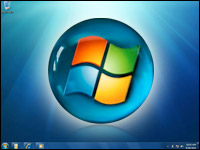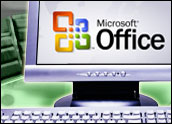
PC users purchased record numbers of Windows licenses in the last three months of 2009, driving big gains for Microsoft over the company’s second fiscal quarter, the first quarter in which the company’s Windows 7 OS was on retail shelves.
For its quarter ended Dec. 31, Microsoft reported net income of US$6.66 billion, or 74 cents per share, from $4.17 billion, or 47 cents a share, a year ago. Revenue rose to $19.02 billion from $16.63 billion the same quarter a year ago.
Microsoft’s performance for the quarter beat Wall Street estimates by 15 cents. Analysts had been expecting Microsoft to register $17.4 billion in revenue.
Microsoft’s non-Windows divisions reported stagnant or otherwise disappointing performance: Sales of Office software were flat, for example, and revenue for online services declined 5 percent to $581 million from the same period the year before.
However, its Windows division saw revenue jump an eye-popping 70 percent to $6.9 billion — results that included $1.71 billion in deferred revenue from pre-sales of Windows 7 that occurred before the operating system was released. The company sold 60 million Windows licenses in the second quarter, making it the fastest-selling operating system in history, Microsoft said.
Ups and Downs
After Microsoft first reported its earnings, its shared moved higher toward $30 per share, according to Fred Ruffy, senior trading analyst with WhatsTrading.com. Since then, however, the stock slid below $29 — the second biggest loser in the Dow behind Boeing, he told the E-Commerce Times.
“While second quarter result easily beat Street estimates, some investors might have been disappointed by the lack of positive forward-looking statements,” he said. “Instead, Microsoft’s CFO Peter Klein said in a post-earnings conference call that there has been no return in enterprise spending growth to date. In addition, third-quarter and 2010 Windows division growth will be in line with overall PC growth. Further, he expects business refresh cycle to begin in 2010 and gradually increase.”
Some investors might have expected more upbeat comments, especially as it relates to business IT spending, Ruffy concluded.
Indeed, Klein took pains to point out the differences between consumer and enterprise spending in his comments during the conference call. “While consumer demand remains healthy, we have not seen a return of enterprise spending growth,” he told analysts on an earnings conference call Thursday.
Windows 7 Demand
Eventually businesses are going to follow suit in their purchases of Windows 7, if only for the same reasons that have propelled consumers: pent up demand, a full forward press on marketing and support by Microsoft and a robust product.
“The satisfaction rate with Windows 7 has been very high — both in the September-October time frame and the latest research data from December-January,” said Laura DiDio, principle with ITIC, referring to survey data her firm has collected.
“Clearly there was a lot of pent-up demand — people can’t stay on XP forever, because the applications keep progressing beyond the point that XP can support.”
Survey data suggests that Windows 7 will continue to uplift Microsoft earnings at least for one more quarter.
In the ITIC survey, 60 percent of respondents said they would deploy Windows 7 within the first year of its release. Within the first six months of its release, 30 percent said they would migrate to the new OS. “We are in that window right now, with another wave expected,” she said.
Microsoft worked hard to deliver a product that would be well-received by the public, she continued — especially after Vista’s disastrous rollout. “You can never have all the kinks worked out of a product, but they got the big ones nailed.”























































Social Media
See all Social Media